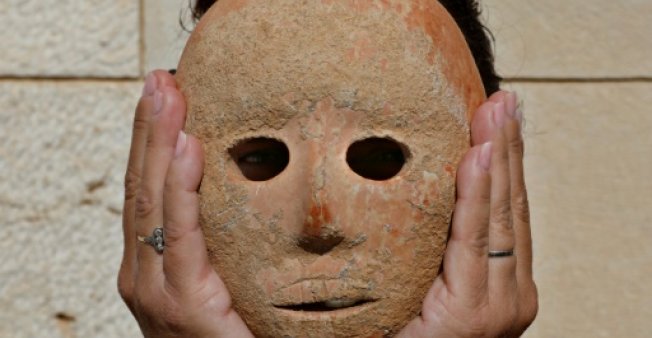
The pink and yellow sandstone object was discovered in a field at the Jewish settlement of Pnei Hever, in the Israeli-occupied West Bank, said the IAA.
The artefact was handed into authorities in early 2018.
"The mask is very naturalistic in the way it was made," said IAA archaeologist Ronit Lupu. "You can see the cheekbones, you can see a perfect nose."
"It's a rare mask," she told AFP. "The last one that we know was found 35 years ago. It's an amazing find, archaeologically speaking."
The West Bank is a Palestinian territory occupied by Israel in the 1967 Six-Day War.
Israel adopts controversial Jewish nation-state law
Disputes over ownership of artefacts discovered there are just part of the long-running conflict with the Palestinians over the land.
The IAA placed the mask at a pivotal period in Neolithic culture.
"Stone masks are linked to the agricultural revolution," the authority said in a statement.
"The transition from an economy based on hunting and gathering to ancient agriculture and domestication of plants and animals was accompanied by a change in social structure and a sharp increase in ritual-religious activities."
Among such activities, it said, was ancestor worship.
"It was part of the ritual and retention of family heritage that was accepted at the time," the statement said.
"Stone masks, such as the one from Pnei Hever, are similar in size to the human face, which is why scholars tend to connect them with such worship."






1732445375-0/Untitled-design-(9)1732445375-0-270x192.webp)


1732428810-0/Copy-of-Untitled-(3)1732428810-0-270x192.webp)
1732425487-0/BeFunk_§_]__-(42)1732425487-0.jpg)






COMMENTS
Comments are moderated and generally will be posted if they are on-topic and not abusive.
For more information, please see our Comments FAQ